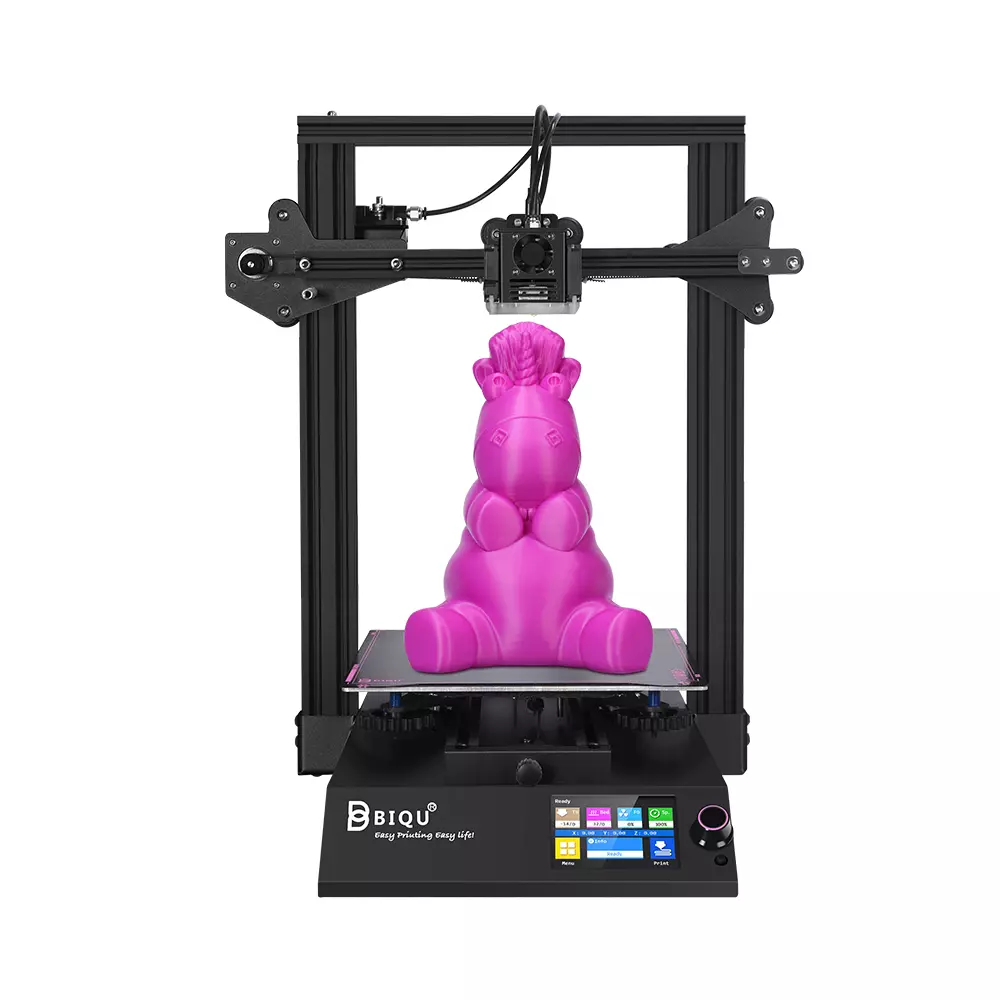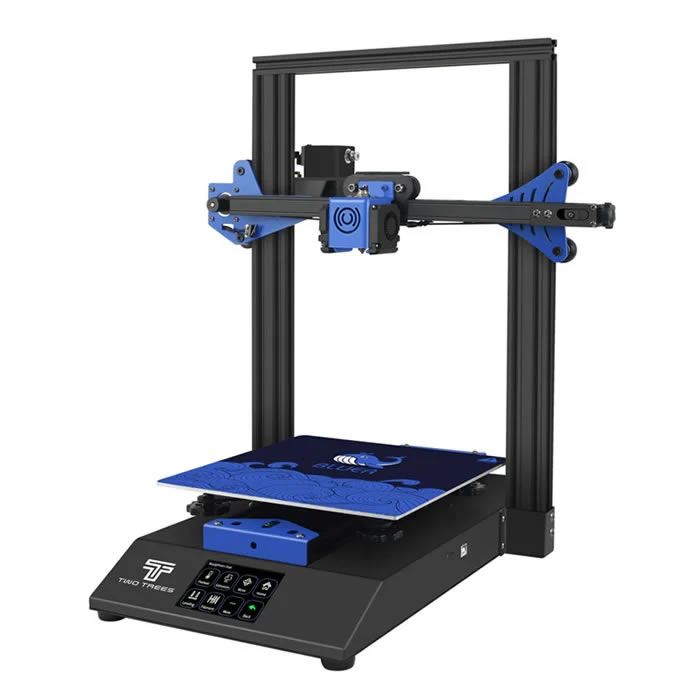Compare BIQU B1 vs Bluer
Comparison between the best 3D printers
Choose the best 3D printer at the best price. The cheapest 3D printers are here.
Buy a 3D printer here with 3D Fila.
 |
 |
|
| Model | BIQU B1 |
Bluer |
| Printing Material | Filament | Filament |
| Buy Filament for BigTreeTech BIQU B1 | Buy Filament forTwoTrees Bluer | |
| Estimated price | $269,00 | $169,00 |
| Manufacturer | BigTreeTech | TwoTrees |
| Release Year | 2020 | 2019 |
| Print Volume [mm] | 235x235x270 | 230x230x280 |
| Printer Size [mm] | 412x402x492 | 400x410x520 |
| Weight [kg] | 8,00 | 8 |
| Power Loss Recovery | YES | YES |
| Enclosed printer | NO | NO |
| Bed Leveling | Manual | Manual |
| Filament End Sensor | YES | YES |
| Bed type | Heated | Heated |
| Power supply system | Bowden | Bowden |
| Standard nozzle | 0,4 | 0,4 |
| Maximum Nozzle Temperature [°C] | 250 | 260 |
| Maximum Bed Temperature [°C] | 100 | 100 |
| Maximum printing speed [mm/s] | 100 | 200 |
| Filament holder | YES | YES |
| Camera for supervision | NO | NO |
| Recommended filaments | PLA, TPU, ABS, PETG | PLA, PETG |
| Recommended slicers | Cura, Simplify, Slic3r | Cura, Simplify, Slic3r |
| Maximum Resolution [mm] | 0,1 | 0,1 |
| Processor | 32 Bits BTT SKR V 1.4 | MKS Robin Nano V1.2 + TMC2208 |
| Display | Touchscreen TFT 3,5'' | Touchscreen TFT 3,5'' |
| Power Supply | 24V / 360W | 240W |
| Connectivity | SD / USB | SD / USB |
| Operating systems | Windows, Mac, Linux | Windows, Mac, Linux |
| Date of registration in the system | 2021-04-14 | 2021-09-20 |
| Release date | 2020 | 2019 |
| Extra features | The BIQU B1 is an advanced 3D printer with a silent 32-bit BTT SKR V1.4 motherboard and ARM Cortex-M3 CPU, offering DIY interfaces (I2C, SPI, WiFi) and dual Z-axis. Its dual BTT B1 TFT35 V3.0 operating system allows real-time monitoring and multiple printing modes, including G-code visualization effects. It stands out for its BIQU SSS (Super Spring Steel), ensuring easy model adhesion and simplified removal, with the possibility of using it on both sides. It includes a filament sensor, automatically pausing printing in case of filament breakage. The multicolored RGB lights integrated into the hotend allow you to view the printing status even at night. Additional notes include the need for a BIQU-specific Type-C cable and extra interfaces for smart filament sensor and BL Touch. | The Bluer offers interesting features such as automatic bed leveling, a 3.5-inch color touchscreen for easy operation, and a filament sensor to prevent print failures. It has a robust metal extruder and a generous 230 x 230 x 280 mm print volume, suitable for a variety of projects. The community mentions improvements made by Two Trees based on feedback, increasing its reliability. |
| Support for multiple colors and materials (AMS and CFS) | NO | NO |
Notes * |
||
| Cost-benefit | 7 / 10 | 7 / 10 |
| Hardware | 2 / 10 | 2 / 10 |
| Tela | . | . |
| Print volume | 3 / 10 | 3 / 10 |
| Performance | 1 / 10 | 2 / 10 |
Conclusion |
| In comparing the BIQU B1 and TwoTrees Bluer 3D printers, both models offer a solid foundation for enthusiasts and hobbyists, but they cater to slightly different priorities. The BIQU B1, released in 2020, boasts slightly larger print dimensions and a higher maximum printing speed. It features advanced hardware with a 32-bit motherboard that enhances overall performance, as well as integrated RGB lights for print monitoring—these details suggest a focus on advanced usability and tech-savvy features. Its cost-to-benefit ratio is commendable, along with several thoughtful design elements such as a dual Z-axis for improved stability and thorough firmware support. On the other hand, the TwoTrees Bluer, although a year older, provides noteworthy functionalities like a robust metal extruder and automatic bed leveling, emphasizing user-friendliness and reliability based on community feedback. It is more affordable, making it a compelling option for those new to 3D printing or on a budget who still desire solid performance. In conclusion, if you're seeking a slightly more sophisticated printer with advanced features and higher performance, the BIQU B1 is the better choice. However, for users prioritizing affordability and ease of use without compromising essential functionalities, the TwoTrees Bluer stands out as a highly attractive option. Ultimately, the decision may hinge not only on performance metrics but also on user preferences for complexity versus simplicity in their 3D printing experience. |

